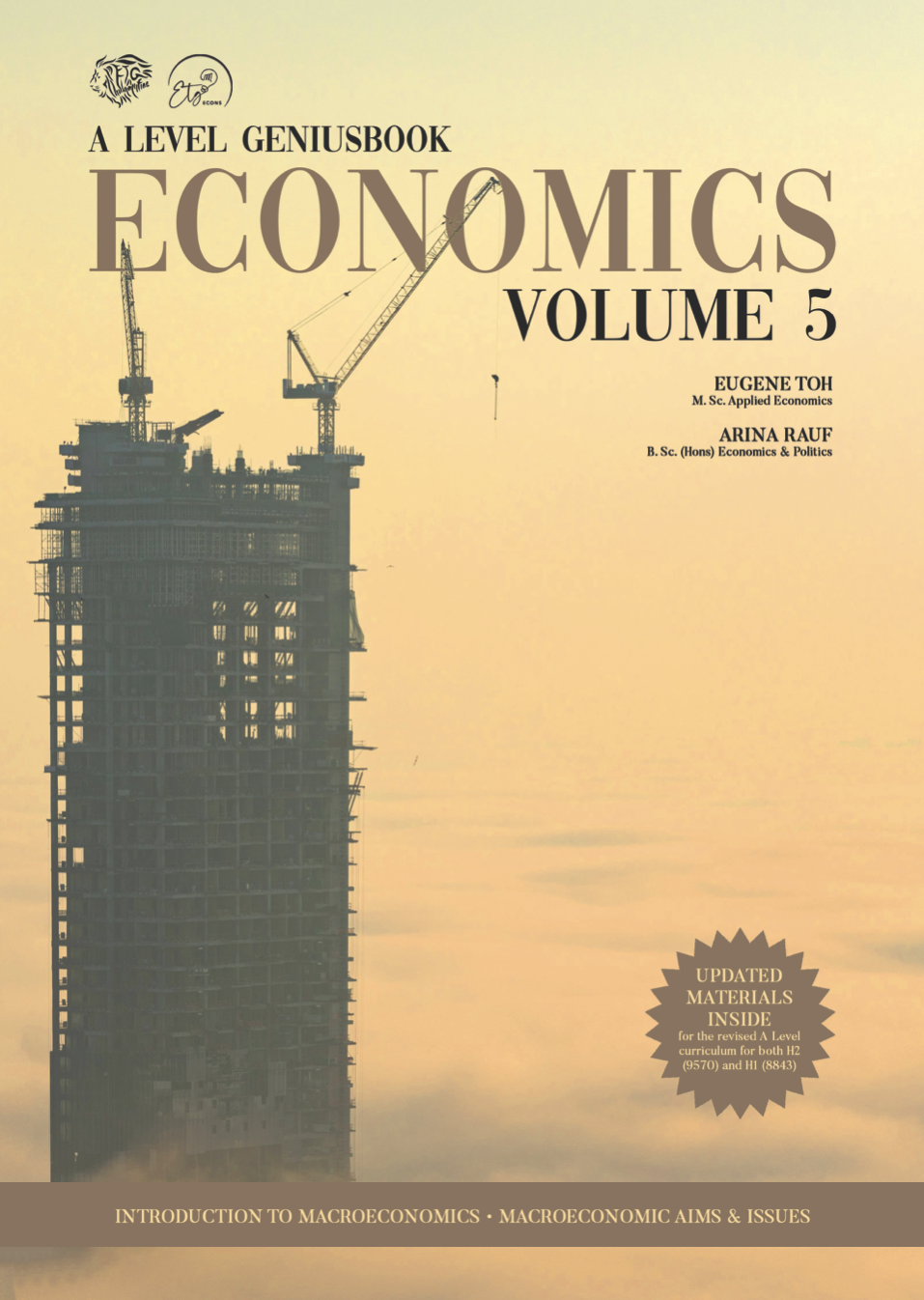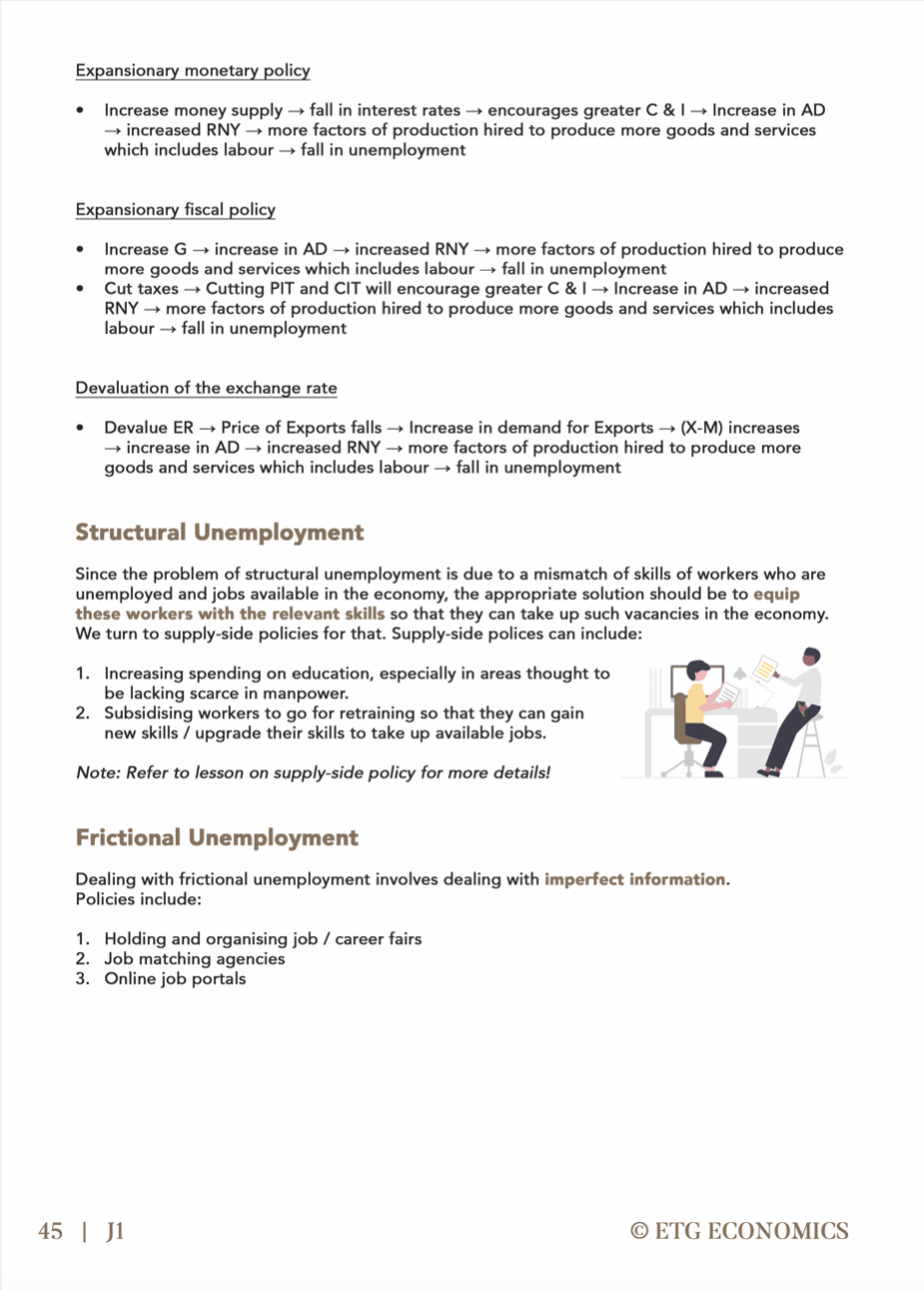Unemployment
Unemployment
Unemployment refers to the state of being able and willing to work, actively seeking work but unemployed. The labour force comprises all individuals who are either employed or unemployed but actively seeking work.
Measuring Unemployment:
Unemployment Rate = (Number of Unemployed People) / (Labor Force) x 100%
Natural rate of unemployment: The level of unemployment at which the inflation rate rises, which means that below this level of unemployment, inflation starts to rise. There is structural and frictional unemployment but little cyclical unemployment present. For large economies, a range of unemployment rates considered to be at full employment level would be 3 to 5% while for smaller economies it would be 2 to 3%.
Full employment level: There is a base level of unemployment to which we refer to as the natural rate of unemployment or NAIRU (non-accelerating inflationary rate of unemployment). This does NOT mean that there is 0% unemployment.
Unemployment in Singapore:
For the bulk of the last decade, Singapore’s unemployment rate largely hovered around 2 to 3%, operating either at full employment or near full employment level.
The peak unemployment rate of 3.2% was experienced in 2020 as a result of Covid-19 disruptions and only in mid-2021, it fell to about 2.8%.
As of Q1 2024, Singapore's seasonally adjusted unemployment rate is 2.1%, indicating a relatively low level of unemployment. This is slightly higher than the 2.0% rate observed in Q4 2023 but still considered healthy.
Types of Unemployment
1. Frictional Unemployment
Temporary unemployment arises from the natural process of individuals transitioning between jobs. This includes searching for new opportunities, taking time off, or changing careers and is largely a problem of imperfect information.
Causes: Skills mismatch, geographical relocation, voluntary job changes.
2. Structural Unemployment
Unemployment is caused by a mismatch between the skills demanded by employers and the skills possessed by the workforce. This can be due to technological advancements, changes in industry composition, or a lack of training opportunities.
Causes: Technological change, globalisation, skill obsolescence.
3. Cyclical (Demand Deficient) Unemployment:
Unemployment that falls with the business cycle. It happens when there is insufficient or fall in aggregate demand in the economy. It is highest during economic downturns when businesses reduce production and lay off workers.
Causes: Economic recessions, decreased aggregate demand, and financial crises.
Consequences of Unemployment
Economic Costs:
Lost Output: Unemployed individuals represent a pool of unused labour, leading to potential output loss for the economy.
Reduced Tax Revenue: Lower employment translates to lower tax revenue, limiting government resources for public services.
Social Costs:
Increased Poverty and Inequality: Unemployment can lead to financial hardship, and poverty, and exacerbate income inequality.
Social Unrest: High unemployment can contribute to social unrest and political instability.
Policy Responses to Unemployment
Expansionary Fiscal Policy:
Government Spending: Increased G stimulates AD, increasing RNY and more factors of production are hired to produce more goods and services which includes labour, causing a fall in unemployment.
Tax Cuts: Reducing both CIT and PIT encourages greater I and C, increasing AD and RNY. More factors of production are hired to produce more goods and services which includes labour, causing a fall in unemployment.
Expansionary Monetary Policy:
Lowering Interest Rates: By increasing the money supply, Central banks can lower interest rates to encourage C and I, increasing AD and RNY. More factors of production are hired to produce more goods and services which includes labour, causing a fall in unemployment.
Depreciating Exchange Rates: The price of X falls, increasing demand for X, causing (X-M) to increase and thus AD and RNY increases. More factors of production are hired to produce more goods and services which includes labour, causing a fall in unemployment.
Supply-side Policies:
Training and Retraining Programs: Investing in skills development can help equip the workforce with skills demanded by the changing economy. Governments can subsidise workers to attend retraining to gain new skills or upgrade their skills to take up available jobs.
Organising career fairs: To increase the number of agencies and online job portals for job matching to eliminate imperfect information.
Did you know that Unemployment is commonly tested in the A-Level as an Essay? Are you confident that you can tackle them? If you aren’t, we are here to help:
The 2024 ETG June Holiday Intensive Crashcourse is your key to exam success.
What we offer:
Covering 8 crucial macroeconomics & microeconomics topics which are commonly tested in A Levels
Master a Massive Arsenal of Questions: We'll expose you to a wider variety of exam-style questions than you've ever seen.
Double the Practice, Double the Confidence: In just two intensive days, you'll tackle more essays and case studies than you probably have all year!
Unlock High-Scoring Answers: Learn the secrets to crafting top-notch evaluations that will impress examiners.
Structure Like a Pro: We'll equip you with the skills to dissect questions and write clear, well-structured essay responses.
This Crashcourse is the ultimate shortcut to A-Level Economics domination! Don't miss out - secure your spot today! Register for our Content Crashcourses and Essay & Case Study Bootcamp here!
Take a look at our stunningly curated textbooks, exclusively available for ETG students only:
Curious to find out about the ETG experience? Register for a Trial Lesson now! (P.S. There are free materials when you join for our Trial Lessons)



